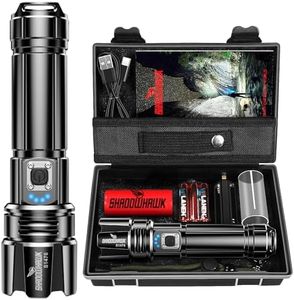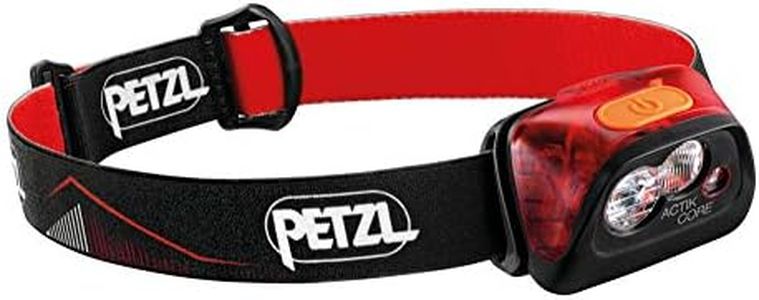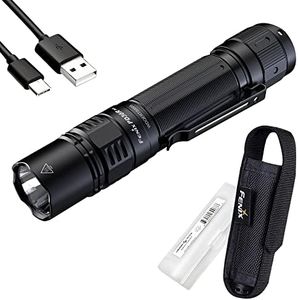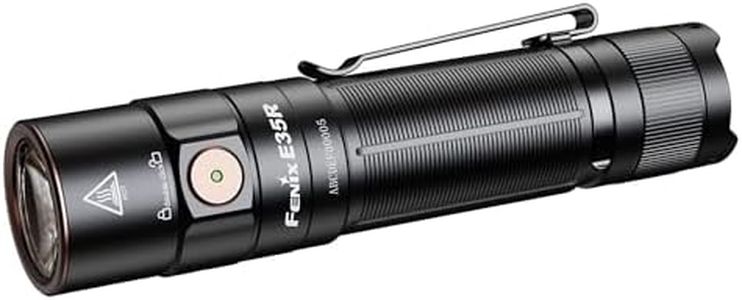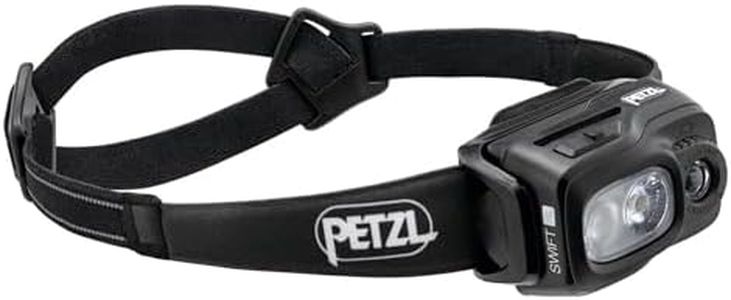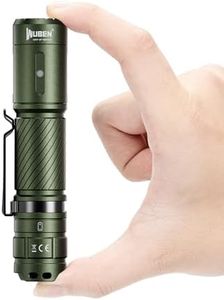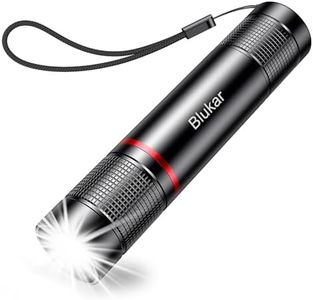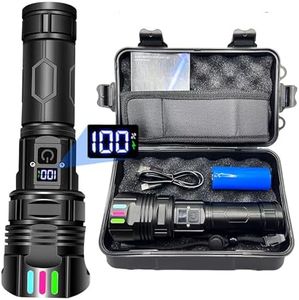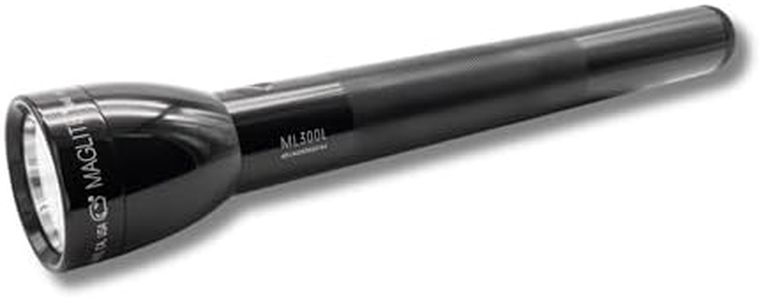We Use CookiesWe use cookies to enhance the security, performance,
functionality and for analytical and promotional activities. By continuing to browse this site you
are agreeing to our privacy policy
10 Best Survival Flashlights
From leading brands and best sellers available on the web.Buying Guide for the Best Survival Flashlights
Choosing the right survival flashlight can make a big difference in emergency situations, outdoor adventures, or even power outages at home. A survival flashlight is more than just a simple light; it can be a life-saving tool that helps you navigate in the dark, signal for help, and perform tasks when regular lighting isn’t available. When selecting a survival flashlight, it’s important to think about where and how you plan to use it, and understand the key features that make a flashlight reliable and effective.Brightness (Lumens)Brightness for flashlights is measured in lumens, which indicates how much light the flashlight emits. A higher lumen count means a brighter light, which can be useful for illuminating large areas or seeing long distances. Low-lumen flashlights (20-100 lumens) are good for reading or close-up tasks, medium brightness (100-500 lumens) is suitable for most regular activities such as camping or walking, while high lumens (500+) are excellent for search and rescue or emergency situations where maximum visibility is required. Choose the right brightness according to your most common use; if you only need to see a few feet around you, ultra-high brightness may not be necessary and could drain battery faster.
Battery Type and LifeThe battery type and how long the flashlight operates on a single charge or set of batteries is essential in survival scenarios. Some flashlights use disposable batteries (like AA or AAA) which are easy to find, while others use rechargeable batteries, which save money and are eco-friendly but need access to power for charging. Battery life can range from a couple of hours to several days, depending on brightness and usage. For emergencies, longer battery life is often better, and flashlights with multiple power options (such as solar, hand-crank, or USB charging) can offer extra assurance if you’re cut off from power sources.
Durability and Water ResistanceA survival flashlight should be tough enough to handle drops, bumps, and bad weather. Durability usually relates to the material of the body (often aluminum or high-quality plastic) and whether it can withstand rough handling. Water resistance is typically rated as IPX4, IPX6, or IPX8; a higher number means better protection against water. If you’ll be outdoors in the rain or near water, aim for at least IPX6, which can handle heavy splashes. For general survival use, a durable, water-resistant flashlight ensures it won’t fail when you need it most.
Size and WeightThe size and weight of a flashlight affect how comfortable it is to carry, especially if you’ll have it in your backpack or pocket for long periods. Compact, lightweight flashlights are easier to carry but may have shorter battery life or lower brightness. Larger models might be more powerful and durable but can be heavy or bulky. Think about your likely scenarios: if you need something always on hand, go compact; if it will mainly stay in your kit or car, you might prioritize power over portability.
Light Modes and FeaturesMany survival flashlights offer different light modes such as high, medium, low, strobe, or SOS. These modes can help you adjust the brightness to conserve battery, avoid blinding yourself, or signal for help. Some flashlights include extra features like zoomable beams, built-in compasses, or even emergency alarms. Choosing the right light modes and features depends on your intended activities; if you expect to use the flashlight for signaling or emergencies, look for strobe and SOS features, while adjustable brightness can help manage power use in routine situations.
Beam Distance and TypeBeam distance shows how far the light can reach, while the beam type (focused or wide) affects what you see. Long beam distances (100 meters or more) are helpful for search and navigation outdoors, while wide beams light up a larger area but don’t reach as far. Some flashlights let you switch between focused and wide beams. Decide whether you need to see far ahead, light up your camp, or do both, and pick a flashlight with a suitable beam type or zoom feature for your needs.


